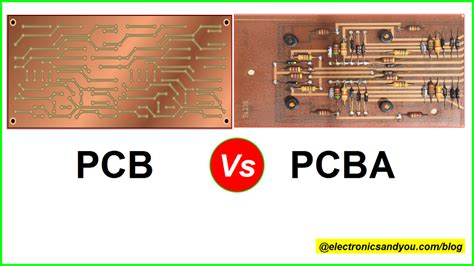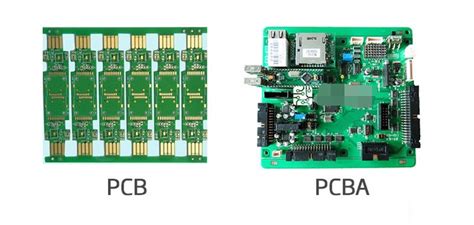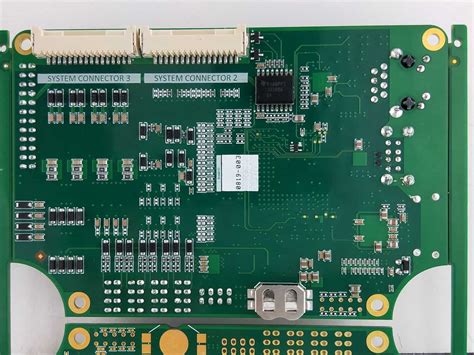Types of PCBA based on the assembly process
1. Surface Mount Technology (SMT) Assembly
Surface Mount Technology (SMT) is a method of assembling electronic components directly onto the surface of a printed Circuit board. SMT components are smaller and have leads that are soldered directly to the surface of the PCB. This type of assembly is highly automated and is used for high-volume production.
Advantages of SMT Assembly
- High component density
- Reduced PCB size and weight
- Faster assembly process
- Lower production costs for high-volume production
Disadvantages of SMT Assembly
- Higher initial setup costs
- Requires specialized equipment and skilled operators
- Limited ability to rework or repair assembled boards
2. Through-Hole Technology (THT) Assembly
Through-Hole Technology (THT) is a method of assembling electronic components by inserting their leads through holes drilled in the PCB and soldering them to pads on the opposite side. THT components are larger and have longer leads compared to SMT components.
Advantages of THT Assembly
- Stronger mechanical bonds between components and the PCB
- Easier to rework or repair assembled boards
- Lower initial setup costs
Disadvantages of THT Assembly
- Lower component density
- Larger PCB size and weight
- Slower assembly process
- Higher production costs for high-volume production
3. Mixed Technology Assembly
Mixed Technology Assembly is a combination of SMT and THT assembly techniques. This method is used when a PCB design requires both SMT and THT components. Mixed Technology Assembly allows for the benefits of both assembly methods to be utilized in a single PCB.
Advantages of Mixed Technology Assembly
- Combines the benefits of SMT and THT assembly
- Allows for the use of a wider range of components
- Provides flexibility in PCB design
Disadvantages of Mixed Technology Assembly
- Requires specialized equipment and skilled operators
- Higher production costs compared to single assembly method
- More complex assembly process
Types of PCBA based on the production volume
1. Prototype PCBA
Prototype PCBA is the assembly of a small number of PCBs, typically less than 100 units, for testing and validation purposes. Prototype PCBA is used to verify the functionality and performance of a new PCB design before moving to high-volume production.
Advantages of Prototype PCBA
- Allows for design verification and testing
- Provides an opportunity to identify and correct design issues early in the development process
- Faster turnaround time compared to high-volume production
Disadvantages of Prototype PCBA
- Higher per-unit cost compared to high-volume production
- Limited component availability and longer lead times
- Manual assembly process, which can be prone to errors
2. Low-Volume PCBA
Low-Volume PCBA is the assembly of PCBs in quantities ranging from 100 to 1,000 units. This type of PCBA is suitable for small-scale production runs or for products with low demand.
Advantages of Low-Volume PCBA
- Lower per-unit cost compared to prototype PCBA
- Faster turnaround time compared to high-volume production
- Allows for design refinements based on feedback from prototype PCBA
Disadvantages of Low-Volume PCBA
- Higher per-unit cost compared to high-volume production
- Limited component availability and longer lead times
- Semi-automated assembly process, which can be prone to errors
3. High-Volume PCBA
High-Volume PCBA is the assembly of PCBs in quantities exceeding 1,000 units. This type of PCBA is suitable for mass production of electronic devices with high demand.
Advantages of High-Volume PCBA
- Lowest per-unit cost
- Highly automated assembly process, which reduces the risk of errors
- Shorter lead times and better component availability
Disadvantages of High-Volume PCBA
- Higher initial setup costs
- Longer turnaround time compared to prototype and low-volume PCBA
- Less flexibility for design changes

Types of PCBA based on the application
1. Consumer Electronics PCBA
Consumer Electronics PCBA is the assembly of PCBs for electronic devices intended for personal or household use. Examples include smartphones, laptops, televisions, and home appliances.
Characteristics of Consumer Electronics PCBA
- High-volume production
- Emphasis on cost reduction and efficiency
- Frequent design updates to keep up with market trends
- Strict quality control and testing requirements
2. Automotive Electronics PCBA
Automotive Electronics PCBA is the assembly of PCBs for electronic systems used in vehicles. Examples include engine control units, infotainment systems, and advanced driver assistance systems (ADAS).
Characteristics of Automotive Electronics PCBA
- High reliability and durability requirements
- Strict adherence to industry standards and regulations
- Designed to withstand harsh environmental conditions
- Long product life cycles
3. Medical Electronics PCBA
Medical Electronics PCBA is the assembly of PCBs for electronic devices used in the healthcare industry. Examples include medical imaging equipment, patient monitoring systems, and implantable devices.
Characteristics of Medical Electronics PCBA
- High reliability and accuracy requirements
- Strict adherence to industry standards and regulations
- Designed to be biocompatible and safe for use in medical applications
- Long product life cycles
4. Industrial Electronics PCBA
Industrial Electronics PCBA is the assembly of PCBs for electronic systems used in industrial applications. Examples include process control systems, automation equipment, and power electronics.
Characteristics of Industrial Electronics PCBA
- High reliability and durability requirements
- Designed to withstand harsh environmental conditions
- Long product life cycles
- Emphasis on modularity and scalability
5. Aerospace and Defense Electronics PCBA
Aerospace and Defense Electronics PCBA is the assembly of PCBs for electronic systems used in aircraft, spacecraft, and military applications. Examples include avionics systems, radar systems, and satellite communication equipment.
Characteristics of Aerospace and Defense Electronics PCBA
- Highest reliability and performance requirements
- Strict adherence to industry standards and regulations
- Designed to withstand extreme environmental conditions
- Emphasis on security and data protection

Comparison Table
| PCBA Type | Assembly Process | Production Volume | Key Characteristics |
|---|---|---|---|
| SMT | Surface mount | High | High density, automation |
| THT | Through-hole | Low to Medium | Strong mechanical bonds |
| Mixed | SMT and THT | Low to High | Combines SMT and THT benefits |
| Prototype | Manual or Semi-automated | Less than 100 | Design verification and testing |
| Low-Volume | Semi-automated | 100 to 1,000 | Design refinements |
| High-Volume | Highly automated | More than 1,000 | Lowest cost per unit |
| Consumer Electronics | SMT, Mixed | High | Cost reduction, frequent updates |
| Automotive Electronics | SMT, THT, Mixed | Medium to High | High reliability, harsh environments |
| Medical Electronics | SMT, Mixed | Low to Medium | High accuracy, biocompatibility |
| Industrial Electronics | SMT, THT, Mixed | Low to High | Durability, modularity |
| Aerospace and Defense Electronics | SMT, THT, Mixed | Low to Medium | Highest reliability, security |

Frequently Asked Questions (FAQ)
1. What is the difference between SMT and THT assembly?
SMT (Surface Mount Technology) assembly involves mounting components directly onto the surface of the PCB, while THT (Through-Hole Technology) assembly involves inserting component leads through holes in the PCB and soldering them to pads on the opposite side. SMT allows for higher component density and automation, while THT provides stronger mechanical bonds.
2. What factors determine the choice of PCBA type for a given application?
The choice of PCBA type depends on several factors, including the required production volume, the complexity of the PCB design, the intended application and its specific requirements (such as reliability, durability, and environmental conditions), and the available budget and time constraints.
3. Can a single PCB design use both SMT and THT components?
Yes, a single PCB design can use both SMT and THT components. This is known as Mixed Technology Assembly, which combines the benefits of both assembly methods and allows for greater flexibility in component selection and placement.
4. What are the advantages of high-volume PCBA?
High-volume PCBA offers the lowest per-unit cost due to the highly automated assembly process and economies of scale. It also benefits from shorter lead times and better component availability compared to low-volume or prototype PCBA.
5. What are the key considerations for aerospace and defense electronics PCBA?
Aerospace and defense electronics PCBA requires the highest levels of reliability and performance, as well as strict adherence to industry standards and regulations. The PCBs must be designed to withstand extreme environmental conditions and prioritize security and data protection. Long product life cycles and extensive testing and certification processes are also common in this sector.
Conclusion
Understanding the different types of PCBA is crucial for selecting the most appropriate assembly process, production volume, and design considerations for a given electronic device or application. Each PCBA type has its own advantages, disadvantages, and key characteristics that must be carefully evaluated to ensure the best possible outcome in terms of functionality, reliability, and cost-effectiveness. By familiarizing yourself with the various PCBA types and their specific requirements, you can make informed decisions when designing and manufacturing electronic products.

Leave a Reply